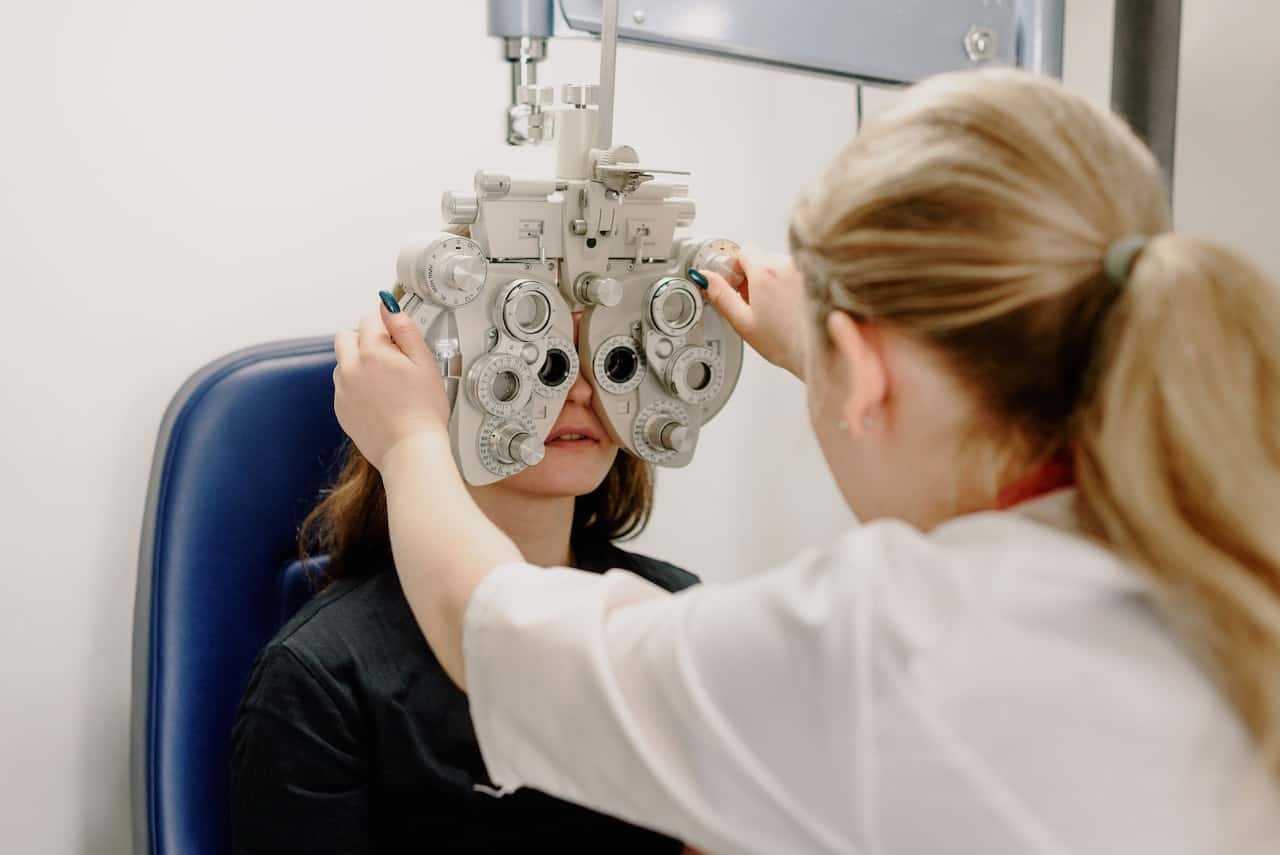The DOT (Department of Transportation) physical is a medical examination that is required for individuals who hold a commercial driver’s license (CDL) and operate commercial motor vehicles (CMVs).
The purpose of the DOT physical is to ensure that the driver is physically and mentally capable of operating a CMV safely. The DOT physical is an important part of ensuring that the nation’s highways and roads are safe for all drivers.
Commercial drivers are required to undergo a DOT physical every two years, or more frequently if they have certain medical conditions that require monitoring. This helps to ensure that drivers are not operating CMVs if they are not fit to do so.
The DOT physical is conducted by a licensed medical expert who is certified by the Federal Motor Carrier Safety Administration (FMCSA). The healthcare provider will conduct a comprehensive medical examination to evaluate the driver’s physical and mental health.
This examination includes a series of tests and checks to determine if the driver is fit to operate a CMV. The DOT physical includes several components, such as a vision test, hearing test, blood pressure check, urine test, physical examination, and medical history review.
The medical provider will evaluate the driver’s vision to ensure that they have adequate visual acuity and a sufficient visual field. The hearing test is conducted to ensure that the driver can hear adequately and can be aware of sounds that are important for driving safely.
The blood pressure check is conducted to ensure that the driver’s blood pressure is under control and does not pose a risk for driving. The urine test is used to screen for medical conditions or the presence of drugs that may impair the driver’s ability to operate a CMV safely.
The physical examination evaluates the driver’s overall health, including their range of motion, respiratory function, and neurological status. The medical history review is an important part of the DOT physical.
The healthcare professional will review the driver’s medical history to identify any past medical conditions, surgeries, or medications that may affect their ability to drive safely.
This information is used to determine if the driver meets the medical qualifications to operate a CMV. If the driver meets all of the DOT physical requirements, they will receive a Medical Examiner’s Certificate (MEC) that is valid for up to two years, depending on the driver’s health status.
If the driver does not meet the requirements, they may be required to seek additional medical evaluation or treatment before they can obtain a MEC and continue driving commercially.
How Long Does A Dot Physical Take
The duration of a DOT (Department of Transportation) physical can vary depending on several factors, such as the healthcare provider’s schedule, the number of drivers being examined, and the complexity of the examination.
However, on average, a DOT physical typically takes around 30 minutes to an hour to complete. During this time, the doctor will conduct a comprehensive medical examination, including a vision test, hearing test, blood pressure check, urine test, physical examination, and medical history review.
Depending on the driver’s health status, additional tests or evaluations may be required, which may extend the duration of the examination. It’s important for drivers to arrive at their DOT physical appointment on time and prepared.
This includes bringing any required medical documents or medications, as well as providing a urine sample if required. Drivers should also be prepared to answer questions about their medical history and current health status.
Medical Examinations And Requirements During The DOT Physical
Physical Exam
The physical exam is an essential component of the DOT (Department of Transportation) physical, designed to evaluate the overall health of commercial drivers and ensure that they are physically capable of operating a commercial motor vehicle safely.
This comprehensive medical examination is conducted by a certified medical examiner who will check for any signs of medical conditions that could impair the driver’s ability to operate a commercial motor vehicle.
During the physical exam, the healthcare professional will evaluate the driver’s respiratory, cardiovascular, neurological, musculoskeletal, and abdominal systems, among others. The healthcare provider will also check the driver’s vital signs, including blood pressure, pulse, and temperature.
The physical exam is aimed at identifying any abnormalities or medical conditions that could potentially compromise the driver’s ability to perform the essential duties of a commercial driver safely.
If any medical conditions are identified during the physical exam, the medical personnel may require the driver to undergo additional testing or evaluation to determine if they are fit to operate a commercial motor vehicle safely.
The healthcare professional may also make recommendations for medical treatment, follow-up testing, or lifestyle changes to help manage any medical conditions or abnormalities.
Vision Test
One of the medical examinations conducted during a DOT (Department of Transportation) physical is the vision test. The purpose of the vision test is to ensure that commercial drivers have adequate visual acuity and a sufficient visual field to operate a commercial motor vehicle safely.
During the vision test, the medical examiner will evaluate the driver’s ability to see clearly at different distances, such as far distance and near distance. The healthcare provider may also test the driver’s ability to distinguish colors, which is important for identifying and interpreting traffic signals and road signs.
To pass the vision test, the driver must have a minimum visual acuity of 20/40 in both eyes, either with or without corrective lenses. This means that the driver can see at 20 feet what a person with normal vision can see at 40 feet.
The medical personnel may also test the driver’s visual field to ensure that they have a minimum horizontal field of at least 70 degrees. If the driver does not meet the minimum requirements for the vision test, they may be required to wear corrective lenses or undergo additional testing or evaluation to determine if they are fit to operate a commercial motor vehicle safely.
In some cases, a driver may be disqualified from driving commercially if they are unable to meet the vision requirements for the DOT physical.
Hearing Test
Another important medical examination conducted during a DOT (Department of Transportation) physical is the hearing test. The hearing test is designed to ensure that commercial drivers can hear adequately and are aware of sounds that are important for driving safely.
During the hearing test, the medical examiner will evaluate the driver’s ability to hear sounds at different frequencies and volumes. The healthcare provider may use an audiometer, a device that produces sounds at different frequencies and volumes, to test the driver’s hearing.
The driver may be required to wear headphones or earbuds during the test. To pass the hearing test, the driver must be able to hear a forced whisper at a distance of at least 5 feet in one ear. This is also known as the “whisper test.”
The healthcare personnel may also evaluate the driver’s ability to hear tones at different frequencies and volumes to ensure that they can hear important sounds while driving, such as emergency sirens, warning signals, and other traffic-related sounds.
If the driver does not pass the hearing test, they may be required to undergo additional testing or evaluation to determine if they are fit to operate a commercial motor vehicle safely. In some cases, the driver may be required to wear hearing aids or have other accommodations to ensure that they can hear adequately while driving.
Blood Pressure Check
Another important medical examination conducted during a DOT (Department of Transportation) physical is the blood pressure check. The purpose of the blood pressure check is to ensure that commercial drivers do not have hypertension or other cardiovascular conditions that could increase their risk of a medical event while operating a commercial motor vehicle.
During the blood pressure check, the healthcare provider will use a blood pressure cuff to measure the driver’s blood pressure. The healthcare personnel will typically take multiple readings to ensure accuracy and may also ask the driver to sit quietly for a few minutes before the test to allow their blood pressure to stabilize.
To pass the blood pressure check, the driver’s blood pressure must be less than 140/90 mmHg. If the driver’s blood pressure is higher than this, the medical personnel may require the driver to undergo additional testing or evaluation to determine if they are fit to operate a commercial motor vehicle safely.
In some cases, the driver may be required to have their blood pressure monitored regularly and/or take medication to manage their hypertension.
Urine Test
Another medical examination that is conducted during a DOT (Department of Transportation) physical is the urine test. The purpose of the urine test is to screen for various medical conditions, including drug use and certain medical conditions such as diabetes.
During the urine test, the driver will be asked to provide a urine sample in a collection cup. The urine sample will then be sent to a laboratory for analysis. The laboratory will screen the urine sample for various substances, including drugs such as marijuana, cocaine, and amphetamines.
The urine test may also be used to screen for medical conditions such as diabetes. The healthcare provider may test the urine sample for glucose levels, which can indicate whether the driver has diabetes or other glucose-related conditions.
Medical History Review
Medical history review is an important component of the DOT (Department of Transportation) physical. The purpose of reviewing a driver’s medical history is to identify any pre-existing medical conditions that could affect the driver’s ability to safely operate a commercial motor vehicle.
During the medical history review, the healthcare person will ask the driver a series of questions about their medical history, including any chronic medical conditions, previous surgeries, hospitalizations, and medications taken. The healthcare provider will also ask about any history of drug or alcohol abuse.
The medical history review is aimed at identifying any medical conditions or risk factors that could potentially impair the driver’s ability to operate a commercial motor vehicle safely.
For example, drivers with a history of heart disease, sleep apnea, or diabetes may require additional testing or treatment to ensure that they can safely operate a commercial motor vehicle.
Conclusively, the Department of Transportation (DOT) physical in Georgia is a critical requirement for commercial drivers operating within the state. The physical exam ensures that commercial drivers are physically fit and able to operate their vehicles safely.
The DOT physical also helps to detect any medical conditions that could potentially impair a driver’s ability to operate a commercial vehicle. The exam consists of several components, including a review of the driver’s medical history, a physical examination, and a series of tests to assess the driver’s hearing, vision, and overall health.
The exam is conducted by a licensed medical examiner who is certified by the Federal Motor Carrier Safety Administration (FMCSA). To remain in compliance with Georgia’s laws and regulations, commercial drivers must keep up with their DOT physical examinations.
A commercial driver’s license may be suspended or revoked for failing a DOT physical examination. Drivers must therefore take the required actions to maintain their physical health and take care of any medical issues that may develop.



